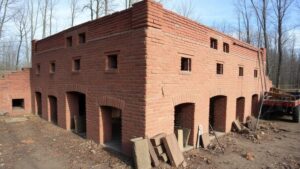Tracing Abandoned Distilleries for Hidden Relics from the Temperance Era
Tracing Abandoned Distilleries for Hidden Relics from the Temperance Era
The Temperance Era, which roughly spanned from the 1820s to the 1930s in the United States, marked a significant cultural and historical shift regarding alcohol production and consumption. The establishment of Prohibition through the 18th Amendment in 1920 led to the closure of many distilleries, some of which have since become abandoned relics of this contentious period. This paper explores methodologies for tracing these abandoned distilleries, the hidden relics they harbor, and their implications for understanding both the Temperance Era and the socio-economic landscape of the time.
Historical Background of the Temperance Era
Prohibition was driven by various social movements, chiefly the Women’s Christian Temperance Union and the Anti-Saloon League, which highlighted the detrimental effects of alcohol on society. By January 16, 1920, the sale, production, and transportation of intoxicating liquors were outlawed, culminating in the closure of approximately 15,000 distilleries by many estimates. While some operators went underground, others abandoned their establishments, leaving behind a wealth of artifacts and architectural remnants.
Methodologies for Tracing Abandoned Distilleries
To fully understand and locate abandoned distilleries from the Temperance Era, researchers can implement several methodologies:
- Historical Research: Utilizing local historical records, newspapers, and archival data to map existing distilleries before and during Prohibition.
- Field Surveys: Conducting on-site investigations in suspected geographic regions to locate remnants or sites of former distilleries.
- Geographic Information Systems (GIS): Employing technology to analyze spatial data and visualize historic distillery locations effectively.
Case Studies of Noteworthy Locations
Several abandoned distilleries throughout the United States provide insights into life during the Temperance Era. For example:
- The Old Forester Distillery, Louisville, Kentucky: Established in 1870, this distillery provided significant contributions before Prohibition forced its closure in 1919. Recovery efforts have uncovered numerous artifacts, including bottles and distillation equipment.
- Old Johnnie Walker Distillery, Kilmarnock, Scotland: Though not American, this case exemplifies abandoned distilleries that hold global significance. The site reveals how prohibition affected whiskey supply chains worldwide.
Hidden Relics and Their Significance
The treasures unearthed at these abandoned sites can vary significantly but often include:
- Bottles–providing insights into marketing and consumer preferences of the time.
- Production equipment–yielding information about distillation techniques and technological advancements.
- Personal artifacts–such as records and diaries, elucidating social attitudes surrounding alcohol during the Temperance movement.
For example, the findings at the Old Forester Distillery revealed bottles of bourbon that were not available until after the repeal of Prohibition, further demonstrating the importance of timing and branding in liquor sales.
Implications for Modern Understanding
Tracing these abandoned distilleries and uncovering their artifacts provide scholars with a deeper understanding of the cultural and societal shifts that occurred during the Temperance Era. It allows historians to address questions regarding the effectiveness of the Prohibition movement, its socio-economic impacts, and the lasting legacies reflected in modern alcohol regulations.
Challenges in Tracing Abandoned Distilleries
While the endeavor to trace abandoned distilleries offers exciting possibilities, several challenges persist:
- Access and Permissions: Many abandoned sites are private property, complicating efforts for documentation and research.
- Environmental Issues: Sites may be hazardous due to deterioration or toxic materials, requiring safety precautions during investigations.
- Inconsistent Records: Documentation during the Temperance Era was not uniformly maintained, making it challenging to construct comprehensive historical accounts.
Conclusion and Actionable Takeaways
Tracing abandoned distilleries from the Temperance Era is an essential avenue for historical research that offers insights into a transformative period in American culture. By employing various methodologies including archival research, field surveys, and GIS technology, researchers can uncover hidden relics that enhance our understanding of social and economic dynamics during Prohibition. Future studies should aim to address the challenges that arise in accessing these sites while collaborating with local historians, archaeologists, and conservationists to preserve these valuable artifacts for generations to come.


